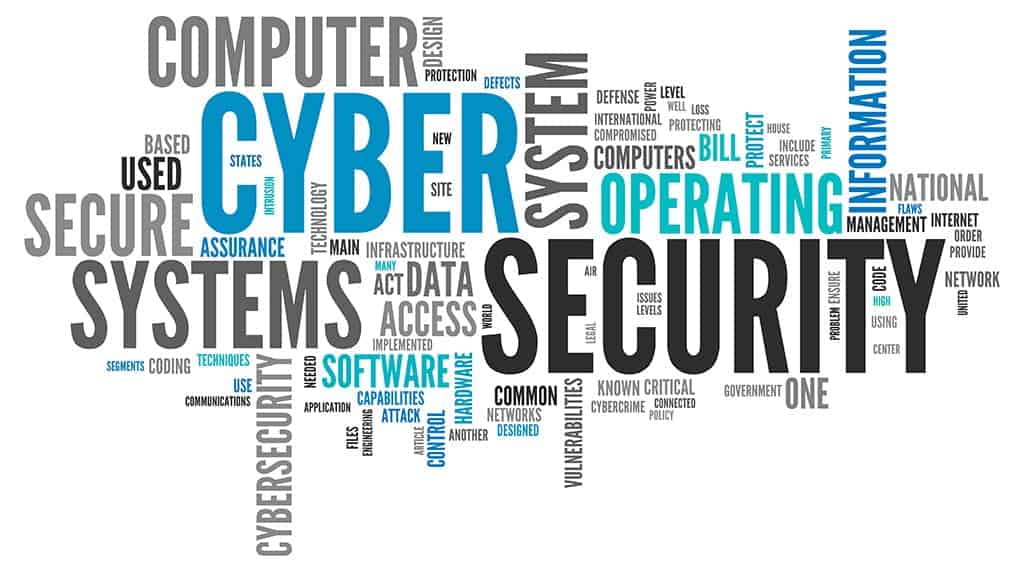In today’s digital age, cybersecurity has become a critical concern for businesses and individuals alike. With the increasing number of cyber threats and the potential damage they can cause, investing in cybersecurity has become more important than ever. One way to tap into this growing market is through cyber exchange-traded funds (ETFs).
In this article, we will explore the world of cyber ETFs and why they are worth considering for investment.
What are Cyber ETFs?
Cyber ETFs, or cyber exchange-traded funds, are investment vehicles that focus on the cybersecurity sector. These specialized funds allow investors to gain exposure to a basket of companies involved in protecting against cyber threats.
By investing in a cyber ETF, you can spread your risk across multiple cybersecurity companies and benefit from their collective growth potential. With the increasing importance of cybersecurity in today’s digital world, cyber ETFs provide an opportunity to participate in this critical industry’s growth.
The Growing Importance of Cybersecurity
In our interconnected world, cybersecurity has become paramount. Data breaches are common, and everyone relies on secure digital systems to protect sensitive information. Without robust cybersecurity measures, businesses and individuals face significant risks.
Hackers continuously exploit vulnerabilities in software systems, leading to financial losses, reputational damage, and compromised personal data. As a result, the demand for cybersecurity products and services is skyrocketing. Governments are implementing strict regulations to ensure data protection.
It is crucial for organizations to invest in proactive cybersecurity solutions and foster awareness to navigate the digital landscape securely.
Understanding the Benefits of Investing in Cyber ETFs
Investing in Cyber ETFs offers diversification, professional management, and liquidity. By investing in a diversified portfolio of cybersecurity companies through a Cyber ETF, you spread your risk across multiple players in the industry and mitigate the impact of poor performance from any individual company.
These funds are managed by professionals with extensive knowledge and experience in the cybersecurity sector, saving you time and effort on individual stock selection. Additionally, Cyber ETFs provide liquidity, allowing you to buy or sell shares at market prices throughout regular trading hours.
This flexibility enables quick reactions to changing market conditions and capitalizing on investment opportunities without being tied to specific buying or selling windows. Overall, Cyber ETFs offer a strategic approach to navigate the dynamic cybersecurity landscape and maximize potential returns.
Top Cyber ETFs to Consider for Investment
When it comes to investing in cybersecurity, exchange-traded funds (ETFs) offer a convenient and diversified approach. Here are three top cyber ETFs worth considering:
CIBR holds a diversified portfolio of global cybersecurity companies involved in network security, encryption, and threat intelligence. It has consistently outperformed the broader market indexes with strong returns and steady growth.
HACK invests in companies across various cybersecurity sub-sectors such as hardware, software, consulting, and services. It has a strong track record of performance with impressive returns over the years and is one of the largest cyber ETFs by assets under management (AUM).
BUG provides exposure to a diversified basket of global cybersecurity companies engaged in cloud security, data protection, and artificial intelligence-driven security solutions. It delivers competitive returns compared to other cyber ETFs and focuses on emerging trends in cybersecurity.
Investing in these top cyber ETFs allows individuals to gain broad exposure to the cybersecurity sector without having to select individual stocks. By considering factors like holdings breakdowns and performance history, investors can position themselves for potential long-term growth and returns in this rapidly growing industry.
Factors to Consider When Choosing a Cyber ETF
When evaluating different cyber ETFs for investment, consider the following factors:
The expense ratio represents the annual operating expenses as a percentage of the fund’s total assets under management (AUM). Lower expense ratios result in higher net returns for investors.
A higher AUM indicates more investor trust and confidence in the fund’s performance and stability.
Tracking error measures how closely an ETF’s performance matches its underlying index. Lower tracking errors indicate better alignment between the fund’s return and its benchmark index.
Consider the dividend yield if you are seeking regular income from your investment, as some cyber ETFs distribute dividends based on dividends received from portfolio companies.
Evaluating these factors will help you make informed decisions when choosing a cyber ETF that aligns with your investment goals and risk tolerance.
Tips for Successful Investing in Cyber ETFs
Investing in exchange-traded funds (ETFs) focused on the cybersecurity sector can be a lucrative strategy for those seeking to capitalize on the growing importance of digital security. To maximize your investment potential in this space, it is essential to consider several key tips.
Firstly, setting realistic investment goals is crucial. By clearly defining your risk tolerance, time horizon, and financial objectives, you can establish achievable targets. This will enable you to stay focused and make informed decisions aligned with your individual circumstances.
Secondly, regularly reviewing the performance of your cyber ETF investments is vital. Monitoring how they align with your expectations allows you to assess their effectiveness within your portfolio. If needed, adjusting your holdings to maintain a balanced and diversified approach can help mitigate risks and optimize returns.
Staying informed about industry trends is another important aspect of successful investing in cyber ETFs. The cybersecurity sector is dynamic and rapidly evolving, with new threats and innovations emerging constantly. Being up-to-date on these developments enables you to identify potential opportunities or risks that could impact your investments.
By keeping a finger on the pulse of this industry, you can position yourself advantageously in the market.
Lastly, considering a long-term investment horizon can be beneficial when investing in cyber ETFs. The cybersecurity sector is expected to experience sustained growth as technology continues to advance and digital threats become more prevalent.
By adopting a long-term perspective, investors can potentially ride the wave of this ongoing expansion while enjoying consistent returns over time.
Best Practices for Risk Management in Cyber ETF Investing
To effectively manage risks in cyber ETF investing, it is important to diversify investments across sectors and industries. Avoid concentrating all investments solely in the cybersecurity sector to reduce exposure to specific risks. Additionally, exercise caution regarding overexposure to any single stock within the cyber ETF portfolio.
Ensure there is sufficient diversification within each fund. Stay updated on cybersecurity news, including data breaches and regulatory changes, to make informed investment decisions based on current trends and challenges in the field.
| Best Practices for Risk Management in Cyber ETF Investing |
|---|
| – Diversify investments beyond one sector or industry |
| – Be cautious of overexposure to any single stock |
| – Stay updated on cybersecurity news |
Getting Started with Investing in Cyber ETFs
Investing in cyber ETFs can be a smart way to capitalize on the growing importance of digital security. Here’s how to get started:
-
Select a brokerage platform: Choose one that offers a wide range of ETFs, competitive fees, and user-friendly trading tools.
-
Open an investment account: Complete the necessary paperwork and provide required identification or financial information.
-
Place trades and monitor your portfolio: Buy shares of the cyber ETF(s) you’ve selected and regularly track performance to make adjustments as needed.
Stay informed about industry trends and news to make educated investment choices. Remember that investing involves risk, so consult with a licensed financial advisor before making any decisions.
Investing in cyber ETFs offers exposure to the cybersecurity sector’s potential for long-term growth and diversification benefits.
Start your journey today!
[lyte id=’B7ZlIE_H6B4′]







